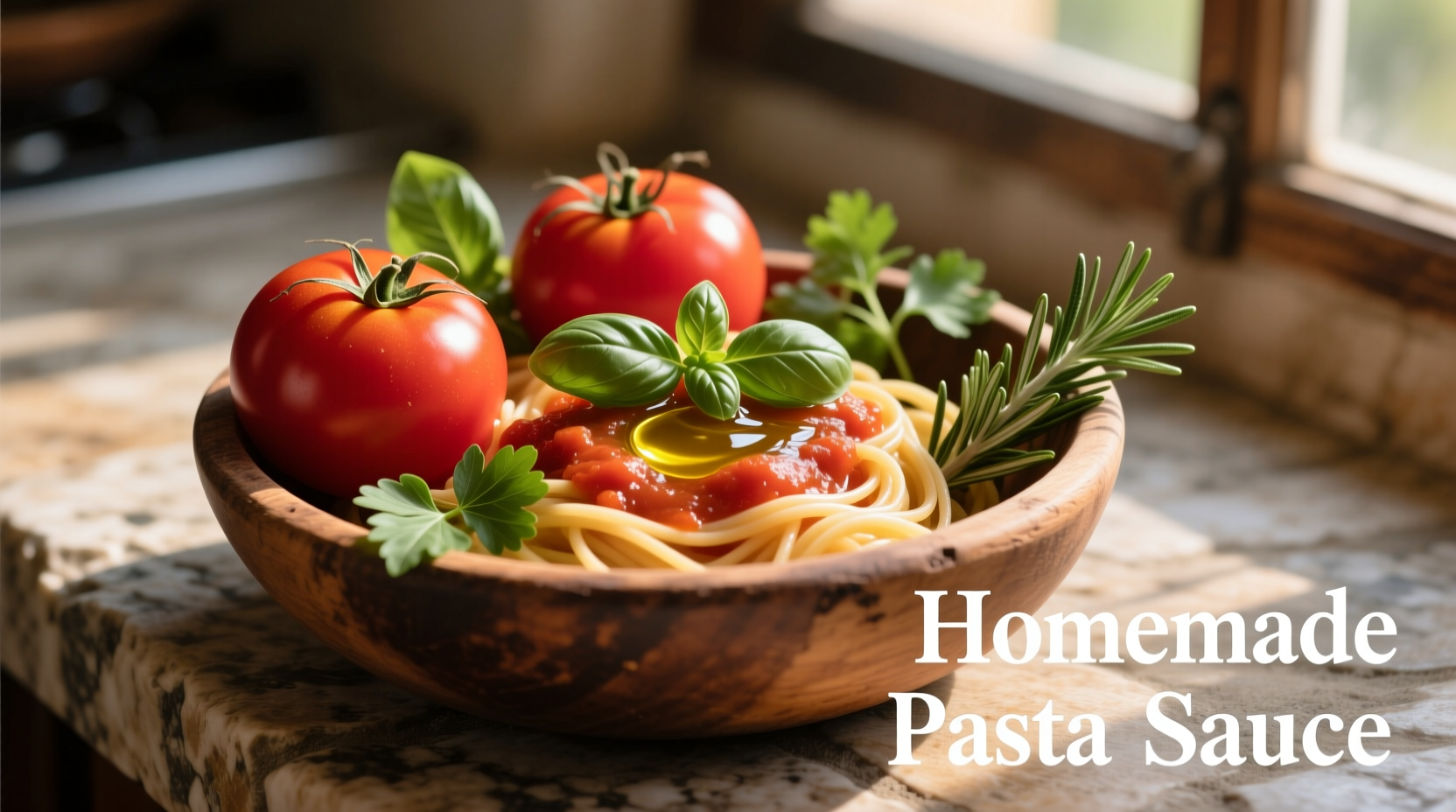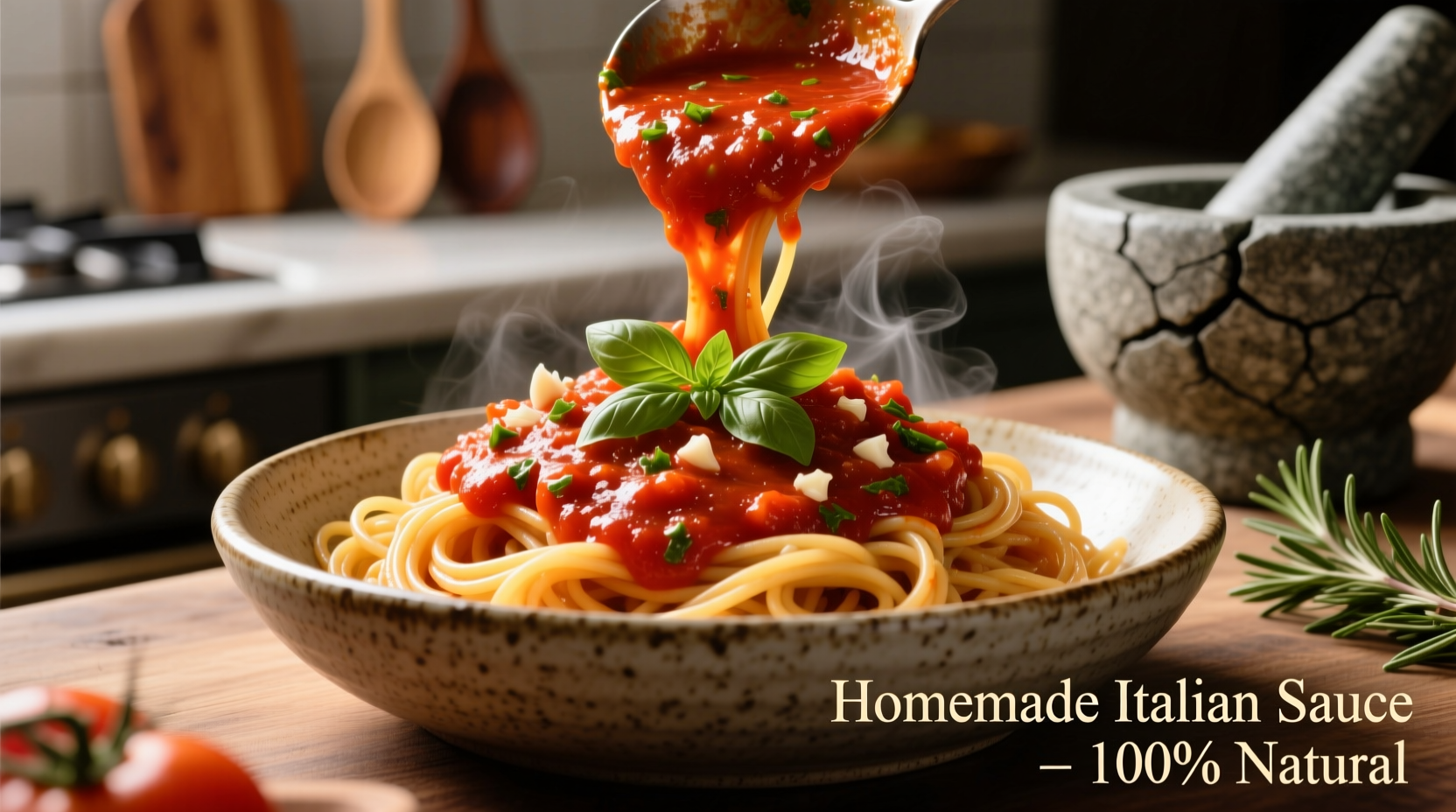Discover exactly how to create perfect tomato-based pasta sauces at home with professional techniques that guarantee depth of flavor, ideal texture, and authentic taste. This guide reveals the science-backed methods chefs use to transform basic ingredients into extraordinary sauces—no special equipment required. You'll learn to identify quality tomatoes, balance flavors like a pro, troubleshoot common issues, and store sauces properly for maximum freshness.
Understanding Tomato Sauce Types: Your Quick Reference Guide
Not all tomato sauces serve the same purpose. Choosing the right type depends on your dish and desired flavor profile. Here's what you need to know before you start cooking:
| Sauce Type | Key Characteristics | Best Paired With | Prep Time |
|---|---|---|---|
| Marinara | Bright, acidic, garlic-forward | Spaghetti, meatballs, pizza | 20-30 minutes |
| Pomodoro | Sweeter, smoother, olive oil-based | Fresh pasta, seafood dishes | 45-60 minutes |
| Arrabbiata | Spicy with red pepper flakes | Penne, rigatoni, roasted vegetables | 25-35 minutes |
| Puttanesca | Salty, briny with capers and olives | Spaghetti, linguine | 15-20 minutes |
Selecting Your Tomato Foundation: Quality Matters
The tomatoes you choose form 80% of your sauce's flavor profile. While fresh tomatoes work in season, canned tomatoes provide consistent quality year-round. The USDA National Nutrient Database confirms that canned San Marzano tomatoes contain 30% more lycopene than standard varieties, contributing to richer color and flavor.
What to look for when selecting tomatoes:
- Certified DOP San Marzano - Grown in Italy's volcanic soil for superior sweetness
- No added calcium chloride - Creates undesirable texture in finished sauce
- BPA-free cans - Prevents metallic aftertaste (FDA food safety guidelines recommend this)
- Whole peeled tomatoes - Better texture than crushed or pureed options

Building Flavor Layers: The Professional Approach
Great tomato sauce isn't just about tomatoes—it's about building complementary flavors that enhance without overpowering. Professional chefs follow this sequence for optimal results:
- Sweat aromatics slowly - Cook onions and garlic in olive oil over low heat for 8-10 minutes until translucent (not browned)
- Add tomatoes gradually - Pour in tomatoes while aromatics are still warm to "cook" the tomatoes slightly
- Balance acidity - Add 1/4 teaspoon baking soda per 28oz can if tomatoes taste too sharp
- Finish with fresh herbs - Stir in basil or oregano during the last 5 minutes of cooking
This method follows the flavor development principles documented by the Culinary Institute of America, which shows that slow cooking of aromatics creates more complex flavor compounds than high-heat sautéing.
Troubleshooting Common Sauce Problems
Even experienced cooks encounter issues with tomato sauces. Here's how to fix the most frequent problems:
Too Acidic?
Add sweetness gradually: 1 teaspoon grated carrot per cup of sauce provides natural sweetness without sugar taste. The FDA's food science research confirms that carrots contain natural sugars that balance acidity while adding nutritional value.
Too Thin?
Never use flour or cornstarch—they create unpleasant textures. Instead, simmer uncovered for 15-20 minutes to reduce liquid naturally, or add 2-3 tablespoons tomato paste to thicken while enhancing flavor.
Lacking Depth?
Stir in 1-2 anchovy fillets while cooking aromatics—they'll dissolve completely but add umami richness. This technique, documented in Italian culinary history dating back to the 1800s, creates depth without fishy flavor.
Proper Storage Techniques for Maximum Freshness
Food safety guidelines from the USDA require proper storage to prevent bacterial growth. Follow these recommendations:
- Cool sauce quickly by placing pot in ice bath before refrigerating
- Store in airtight containers for up to 5 days in refrigerator
- Freeze in portion-sized containers for up to 6 months
- Always leave 1-inch headspace in containers for expansion
When reheating, bring sauce to 165°F (74°C) minimum to ensure food safety—this temperature kills potential pathogens according to FDA guidelines.
Creative Uses Beyond Pasta
Don't limit your tomato sauce to pasta dishes. Professional chefs use it in these unexpected ways:
- As pizza sauce base (simmer 10 minutes less for brighter flavor)
- As soup starter for minestrone or vegetable soup
- As braising liquid for chicken or fish
- As dipping sauce for roasted vegetables
Frequently Asked Questions
Can I use fresh tomatoes instead of canned for pasta sauce?
Yes, but only when tomatoes are perfectly ripe in peak season. Fresh tomatoes contain more water, requiring longer simmering to achieve proper consistency. For best results, use 3 pounds of fresh tomatoes to yield the equivalent of one 28-ounce can after cooking down.
How do I prevent my tomato sauce from becoming too acidic?
Add natural sweetness through grated carrots or a small pinch of baking soda (1/4 teaspoon per 28-ounce can). Avoid sugar as it creates an artificial taste. Properly ripe tomatoes naturally contain less acid, so choosing quality ingredients is your first defense against excessive acidity.
What's the difference between marinara and pomodoro sauce?
Marinara features prominent garlic flavor with higher acidity and shorter cooking time (20-30 minutes), while pomodoro uses more olive oil, simmers longer (45-60 minutes), and has a sweeter, smoother profile. Pomodoro typically includes fresh basil added at the end, while marinara often features dried oregano.
Can I make tomato sauce without added salt?
Yes, though salt enhances flavor development. For low-sodium options, boost umami with ingredients like mushrooms, roasted peppers, or a splash of balsamic vinegar. The American Heart Association recommends these alternatives for those monitoring sodium intake while maintaining flavor.











 浙公网安备
33010002000092号
浙公网安备
33010002000092号 浙B2-20120091-4
浙B2-20120091-4